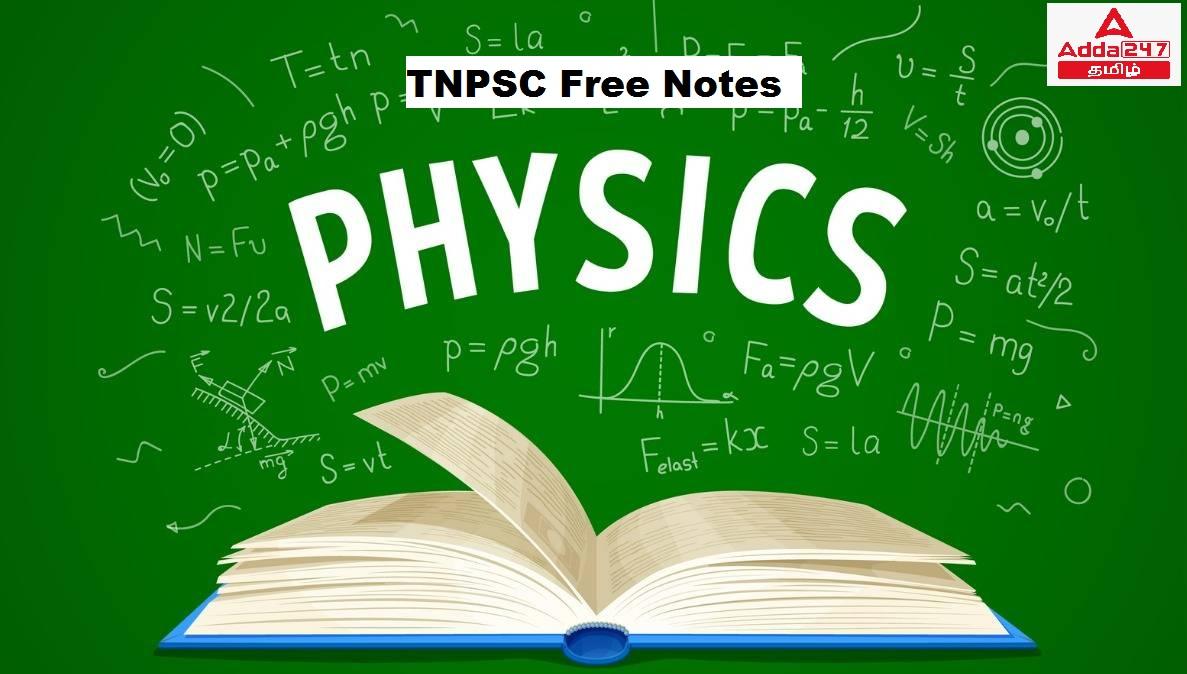இந்தக் கட்டுரையில், TNPSC குரூப் 1, குரூப் 2, குரூப் 2A, குரூப் 4 மாநிலப் போட்டித் தேர்வுகளான TNUSRB, TRB, TET, TNEB போன்றவற்றுக்கான முறைகள் இலவசக் குறிப்புகளைப் பெறுவீர்கள்.தேர்வுக்கு தயாராவோர் இங்குள்ள பாடக்குறிப்புகளை படித்து பயன்பெற வாழ்த்துகிறோம்.
Physics in relation to technology and society
Technology is the application of the principles of physics for practical purposes. The application
of knowledge for practical purposes in various fields to invent and produce useful products or
to solve problems is known as technology. Thus, physics and technology can both together
impact our society directly or indirectly. For example,
i. Basic laws of electricity and magnetism led to the discovery of wireless communication
technology which has shrunk the world with effective communication over large distances.
ii. The launching of satellite into space has revolutionized the concept of communication.
iii. Microelectronics, lasers, computers, superconductivity and nuclear energy have
comprehensively changed the thinking and living style of human beings.
Measurement
The comparison of any physical quantity with its standard unit is known as measurement.
Definition of Physical Quantity
Quantities that can be measured, and in terms of which, laws of physics are described are
called physical quantities. Examples are length, mass, time, force, energy, etc.
Types of Physical Quantities
Physical quantities are classified into two types. They are fundamental and derived quantities.
Fundamental quantities
Fundamental or base quantities are quantities which cannot be expressed in terms of any other
physical quantities. These are length, mass, time, electric current, temperature, luminous
intensity and amount of substance.
Derived quantities
Quantities that can be expressed in terms of fundamental quantities are called derived
quantities. For example, area, volume, velocity, acceleration, force, etc.
Unit
An arbitrarily chosen standard of measurement of a quantity, which is accepted internationally
is called unit of the quantity.
Different types of Measurement Systems
The f.p.s. system is the British Engineering system of units, which uses foot, pound and
second as the three basic units for measuring length, mass and time respectively.
The c.g.s system is the Gaussian system, which uses centimeter, gram
and second as the three basic units for measuring length, mass and time respectively.
The m.k.s system is based on metre, kilogram and second as the three basic units for
measuring length, mass and time respectively.
SI unit System
The system of units used by scientists and engineers around the world is commonly called the
metric system but, since 1960, it has been known officially as the International System, or SI
(the abbreviation for its French name, Système International). The SI with a standard scheme of
symbols, units and abbreviations, were developed and recommended by the General
Conference on Weights and Measures in 1971 for international usage in scientific, technical,
industrial and commercial work.
Quantities
Unit Symbol
Length metre m
Mass kilogram kg
Time second s
Electric current ampere A
Temperature kelvin K
Luminous intensity candela cd
Amount of substance mole mol
**************************************************************************
| Adda247 TamilNadu Home page | Click here |
| Official Website=Adda247 | Click here |









